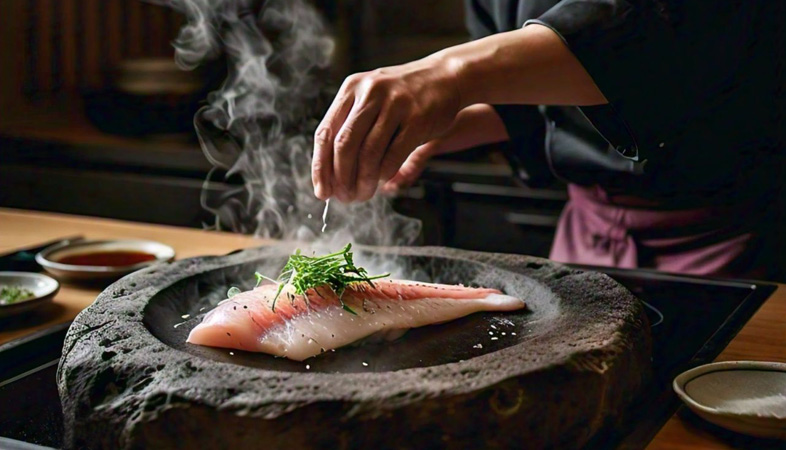Hot Stone Cooking: Harnessing the Heat of the Earth for Delicious Meals
The appeal of hot stone cooking lies in its simplicity and the distinctive textures and flavors it imparts to dishes.
Hot stone cooking is an ancient culinary technique that
brings a unique and captivating element to the dining experience. By utilizing
the natural heat of stones, this method not only enhances the flavors of food
but also provides a visually stunning and interactive way to prepare and enjoy
meals. The appeal of hot stone cooking lies in its simplicity and the
distinctive textures and flavors it imparts to dishes.
The technique involves using heated stones, typically basalt, which are known for their ability to retain and evenly distribute heat. These stones are first heated to a high temperature, often over an open flame or in an oven, before being used as a cooking surface. Once adequately heated, the stones are placed on a heat-resistant surface, such as a wooden board or metal tray, and the food is cooked directly on them. This method allows for a range of cooking styles, from searing meats to grilling vegetables, all while imparting a subtle, smoky flavor.
One of the primary benefits of hot stone cooking is its ability to provide a unique texture and flavor profile to dishes. The high heat of the stones creates a beautiful sear on meats, enhancing their natural flavors and providing a satisfying crispiness on the outside while keeping the interior tender and juicy. Vegetables also benefit from this method, as the stones' heat helps to caramelize their natural sugars, resulting in a rich, slightly charred flavor that complements their freshness.
The interactive nature of hot stone cooking adds an element of entertainment to the dining experience. Guests can enjoy the process of cooking their own food at the table, allowing them to customize the level of doneness and add personal touches to their meal. This interactive approach not only engages diners but also creates a memorable experience that can enhance the enjoyment of the meal.
Hot stone cooking is also praised for its health benefits. Since the technique requires minimal added fats or oils, it allows for a healthier cooking option that still delivers delicious results. The stones' high heat helps to lock in natural juices and flavors, reducing the need for additional seasoning or sauces. This method can be particularly appealing to those who are conscious of their dietary choices but still want to indulge in flavorful, satisfying meals.
In addition to its culinary benefits, hot stone cooking has cultural and historical significance. Many cultures around the world have used hot stones for cooking for centuries, with variations of the technique appearing in various cuisines. From Korean barbecue to traditional Hawaiian cooking, hot stone methods have been embraced for their ability to infuse food with unique flavors and provide a communal, interactive dining experience.
To successfully incorporate hot stone cooking into your culinary repertoire, it’s essential to follow a few key steps. First, ensure that the stones are properly heated to avoid any risk of cracking or breaking. Preheat the stones gradually and evenly to ensure consistent heat distribution. Additionally, using high-quality, food-safe stones is crucial to ensure that the cooking process is both safe and effective.
Hot stone cooking offers a distinctive and flavorful approach to meal preparation that harnesses the natural heat of stones to create delicious, interactive dining experiences. The method’s ability to enhance textures and flavors, combined with its health benefits and cultural significance, makes it a valuable addition to any culinary exploration. Whether used for a special occasion or as a unique everyday cooking method, hot stone cooking promises to bring a touch of tradition and excitement to the table.
.png)




























